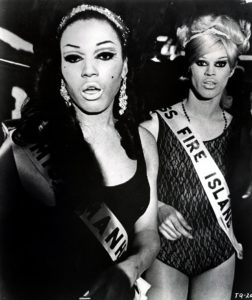What’s Cooking: Frito Pie
 I am going to a barbeque today and I plan to bring a very American dish – Frito Pie! This wonderful concoction originates from the Southwest. I was first introduced to it when I went on a brief business trip out to Albuquerque many years ago. It is basically chili con carne eaten out of a bag of Fritos. This being New Mexico, there was also a dash of red and green chile, making it a “Christmas” Frito pie. New Mexico cuisine is a mix of Mexican, Spanish and Native American foods.
I am going to a barbeque today and I plan to bring a very American dish – Frito Pie! This wonderful concoction originates from the Southwest. I was first introduced to it when I went on a brief business trip out to Albuquerque many years ago. It is basically chili con carne eaten out of a bag of Fritos. This being New Mexico, there was also a dash of red and green chile, making it a “Christmas” Frito pie. New Mexico cuisine is a mix of Mexican, Spanish and Native American foods.
I went to the National Museum of the American Indian in May and tried a version with Bison meat and cornbread. It was pretty good!
For the party tonight, I will be making it as a casserole with the Fritos at the bottom of the bowl, instead of pouring it into Frito bags.
Frito Pie Recipe
Here’s my recipe. If you want to do a vegetarian version, ignore turkey instructions and brings beans and mixture to boil.
- Two pounds lean ground turkey
- A quarter cup of sliced jalapenos
- Two tablespoons all-purpose flour
- One tablespoon of garlic
- One cup of frozen corn
- Two can (15 ounces) red or black beans, rinsed and drained optional
- Four-1/2 cups Fritos corn chips
- Two cups shredded lettuce (optional)
- One-1/2 cups shredded cheddar cheese
- 3/4 cup chopped tomatoes
- Six tablespoons finely chopped onion
- Sour cream and minced fresh cilantro (optional)
 In a six-quart stockpot, cook turkey over medium heat until it’s light brown, breaking into crumbles; drain. Stir in red chile sauce, flour, salt, jalapenos, and garlic until blended. Gradually stir in beans.
In a six-quart stockpot, cook turkey over medium heat until it’s light brown, breaking into crumbles; drain. Stir in red chile sauce, flour, salt, jalapenos, and garlic until blended. Gradually stir in beans.
Bring to a boil. Reduce heat; simmer, uncovered, 12-15 minutes or until thickened, stirring occasionally.
To serve, pour Frito chips into the casserole dish and pour chili mixture on top of it. Then put cheese on top and put in the oven until the cheese is melted at 360 degrees. Take out of oven and top with lettuce, tomatoes, and onion. If desired, top with sour cream. Should make 4-6 servings.


